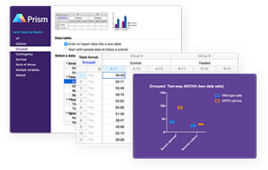Scoping Mechanisms
Acquisition using high-speed oscilloscopes
Bill Weaver, Ph.D.
While developing an instrument to perform ultrafast transient Raman measurements in the early 90s, I often chided scientific CCD camera manufactures for selling such egocentric equipment. The cameras were delivered with their own application software and controlling PC providing a meager opportunity to collect other inputs using batch commands and macros. Remote control required special, often rudimentary, software drivers. During my rant I would suggest that CCD cameras come down from their ivory “instrument in charge” tower and behave like the well-mannered high-speed oscilloscopes we used. They were comparable in price to the cameras, but came outfitted with communication ports and obediently accepted commands and reported their data to the software control applications we created for the entire system — just unassuming, hard-working electronic citizens. What a difference a decade makes.
Three major oscilloscope manufacturers, namely, Tektronix (Tek), LeCroy, and Agilent, currently offer 6-GHz bandwidth oscilloscopes that laugh maniacally at the 9600-baud serial ports of their parents. Through the incorporation of Intel CPUs and Microsoft operating systems, these scopes have bypassed “instrument in charge” and warped straight onto “instrument on steroids.” A tour of the equipment sported by the Agilent Infiniium 54850 scope reveals a 1-GHz Pentium III CPU running Windows XP Pro with 512-MB of RAM, 10-GB hard drive, CD-RW drive, floppy-disk drive, 10/100 Ethernet with email on trigger, 640 x 480 TFT-LCD screen, and USB mouse and keyboard. I don’t know whether to be pleased or little frightened.
In addition to their impressive weapons, each scope has an enabling technology targeted for specific sectors of the high-speed signal acquisition market. The Infiniium comes outfitted with the “MegaZoom” deep memory feature permitting this Digital Storage Oscilloscope (DSO) to cache 1-Mpts at all sample rates and 32-Mpts at 2-GSa/s and slower. That’s up to 32 million data points in a single record used to capture a waveform with 1-ps trigger jitter. The Windows-based analysis software is used to churn through these records in search of glitches, surges, and nonlinearities in the circuits being analyzed. Used in conjunction with the InfiniiMax probe amplifiers, this DSO can acquire signals at 20 GSa/s on all four channels with a 90-ps rise time.
The Tek TDS6000 series DSO provides a similar 6-GHz bandwidth, 70-ps rise time, 0.7-ps trigger jitter, and 32-Mpts acquisition memory; however, Tek has been heralding its new line of Digital Phosphor Oscilloscopes (DPOs) including the TDS7000 series DPO. These 4-GHz bandwidth scopes store the frequency of events in a three-dimensional array of time, amplitude, and distribution of amplitude over time. Similar to the persistence of chemical phosphorescence used by the cathode ray tubes of analog real-time (ART) scopes, the DPO acquires the amplitude distribution at 400 kHz and displays it to the color screen at 30 Hz, creating a visual image that responds to waveform activity in real time. Advantages of the DPO over an ART include intensity information in color, superior horizontal resolution, storage, and on-the-fly analysis.
The LeCroy WaveMaster 8600A is a 75-ps rise time, 6-GHz DSO leveraging LeCroy’s patented X-Stream technology. Incorporating 10-GSa/s SiGe A/D converters, X-Stream pipes the data into fast CMOS memory at a rate of 10-Gbytes/s, pre-processes the data into packets, and streams it directly into the L1 cache memory of the 1.7-GHz Pentium CPU. This eliminates the time required to store and retrieve the data and algorithm instructions from RAM and results in a 100 times increase in data throughput. Utilizing the XDEV Advanced Customization Package software, end users can create analysis routines, custom user interfaces, and link to other programs and hardware through Visual Basic, MATLAB, MathCAD, and Excel using ActiveX and VBScripts — a far cry from the first-generation CCD camera batch commands. While anxiously awaiting the Warner Bros. sequel, Terminator 3: Rise of the Machines, I can’t help but ponder if the new terminator has a 6-GHz bandwidth.
Bill Weaver, an assistant professor in the Integrated Science, Business and Technology Program at LaSalle Univ., may be reached at [email protected].




